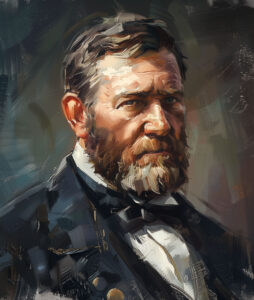The Age of Lincoln
by Orville Vernon Burton, Hill & Wang, 2007, 425 pages, $27.
Orville Burton’s The Age of Lincoln delivers a broad- minded and elegant analysis of one of the most critical periods in our nation’s history. Burton, a professor at the University of Illinois, has plumbed the depths of recent Civil War scholarship to craft a winning narrative that covers the growing antebellum sectional crisis over slavery, the political rise of Abraham Lincoln, the creation of the Confederacy, the war itself in both its military and political aspects, and the many promises and disappointments of Reconstruction.
The book shows clearly how cotton powered the early American economy and “tied North and South together” in a commercial alliance that served to bolster slavery. Indeed, the antebellum cotton boom so supported the Northern economic system, based on a thriving textile industry centered in New England, that it produced what many Southerners termed “wage slavery”— a reality they deemed far worse than Southern slavery. Rather than compete with each other, Burton shows how these “Lords of the lash” (i.e., the Southern slaveholders) and “Lords of the loom” (Northern mill owners) worked together to fight back Federal assaults against slavery before the war, forcing a series of government compromises over the issue.
It all soon fell apart, however. Burton discusses the rise of the abolitionist movement in the 1830s and proves that it was far from unified on tactics and organizational methods. One faction, led by William Lloyd Garrison, hoped to push the abolitionist agenda by educating the public; the other, led by brothers Lewis and Arthur Tappan, wanted to battle slavery through direct engagement in the political system. These rival groups, Burton notes, “made war with each other as well as with the forces of slavery.”
In response to the rising strength of abolitionism, the South began promoting slavery as a positive entity that spurred civilization and Christianity among African Americans. As the opposing elements slugged it out in Congress, radicals on both sides came to the forefront. In exploring this emerging extremism of the 1850s, Burton details such incidents as the vicious caning of abolitionist Massachusetts Senator Charles Sumner by proslavery South Carolina Representative Preston Brooks, and John Brown’s bloody rampages against proslavery elements in Kansas.
By 1860, extremism had grown so powerful that neither side was interested in continued compromise. Burton notes that both believed their positions were supported by God, the Constitution and their personal concepts of justice. Lincoln himself straddled both sides—a native Southerner who intimately understood the South’s firm code of honor.
With equal focus on the battlefield, home front and political developments on each side, the book’s examination of the Civil War is outstanding. Burton shows, for instance, how women and runaway slaves had a huge impact on the war. The actions of slaves in particular, he notes, helped drain the Confederate cause: “In addition to organizing work stoppages and slowdowns, in addition to escaping to Union lines to help fight or work for the Federals, slaves also provided an intelligence infrastructure for invading Union armies.”
The wartime emergency also led to “the growth of corporations and of big government under Lincoln’s administration.” Burton shows that though both sides were fighting for liberty, they actually curtailed civil liberties in mobilizing their populations behind the hard sacrifices of war. Needless to say, the war devastated both North and South, leaving 600,000 soldiers dead and much of the nation forever changed.
Burton offers an excellent explanation of the successes and ultimate failure of Reconstruction. He shows how freed “African Americans strode toward a providential liberty defined by property ownership and legal rights [as] whites contested every step.” He also convincingly communicates how the ideas and ideological conflicts that fueled the war have never truly disappeared from our national consciousness. As the author puts it,“in the American mind, the Civil War itself never truly ended.”
Originally published in the December 2007 issue of Civil War Times. To subscribe, click here.




